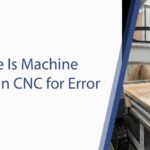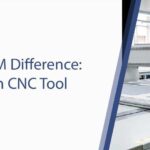IoT Integration in CNC Machining: From Data to Decisions
The Internet of Things (IoT) is reshaping CNC machining by turning isolated equipment into intelligent, connected assets.
By pairing smart sensors with secure connectivity and analytics, manufacturers gain real‑time visibility into performance, quality, and energy use—unlocking faster decisions, fewer stoppages, and higher throughput.
This enhanced guide explains the practical architecture, benefits, implementation roadmap, and KPIs that matter, so you can move confidently from pilots to plant‑wide value.
What IoT Really Means for CNC
IoT in CNC isn’t just “put a sensor on a spindle.” It’s an ecosystem:
- Sensing: Vibration, temperature, current, acoustic, pressure, flow, and tool‑life signals.
- Edge Processing: On‑machine gateways that filter, normalize, and time‑stamp high‑frequency data.
- Secure Connectivity: Industrial Ethernet, Wi‑Fi, or cellular (4G/5G) with TLS/VPN tunneling.
- Cloud/On‑Prem Analytics: Dashboards, alerts, and machine‑learning models for prediction and optimization.
- Action Layer: Maintenance work orders, adaptive feeds/speeds, ERP/MES updates, and operator guidance.
Key Benefits of IoT in CNC Machining
- Real‑time visibility: Monitor status, spindle load, cycle time, and bottlenecks across sites.
- Predictive maintenance: Replace parts based on condition—not the calendar—to prevent failures.
- Higher first‑pass yield: Detect process drift early and correct before scrap is produced.
- Energy and resource efficiency: Optimize power, coolant, compressed air, and tool consumption.
- Full traceability: Tie part history to process parameters for audits and customer confidence.
Predictive Maintenance: From Reactive to Proactive
Traditional maintenance is either reactive (expensive) or scheduled (wasteful). IoT enables condition‑based and predictive approaches:
- Signals to watch: RMS vibration, kurtosis, temperature deltas, spindle current, coolant flow/pressure.
- Models in practice: Remaining useful life (RUL) estimators flag bearings, spindles, or ballscrews at risk.
- Business impact: Fewer emergency stops, shorter MTTR, longer MTBF, and lower spare‑parts spend.
Remote Monitoring & Control
Secure dashboards let engineers supervise multiple CNCs from a control room—or anywhere:
- See: Live OEE, alarms, quality trends, tool wear.
- Act: Adjust parameters, push new programs, schedule maintenance windows, or pause jobs safely.
- Coordinate: Balance workloads across cells and sites to absorb demand spikes.
Quality & Traceability by Design
IoT links every part to its process fingerprint (feeds/speeds, temperature, vibration, tool ID):
- Root‑cause faster: Correlate defects with the exact moment a process drifted.
- Compliance: Provide audit‑ready records for aerospace, medical, and automotive requirements.
- Continuous improvement: Feed lessons learned back into CAM and work instructions.
Energy Optimization & OEE Uplift
Real‑time metering exposes hidden losses:
- Energy: Identify idle power, peak demand events, and inefficient warm‑ups.
- OEE: Attack availability, performance, and quality losses with data—reduce micro‑stoppages and slow cycles.
- Tooling: Track wear patterns to extend tool life without risking quality.
Seamless Enterprise Integration (ERP/MES/CMMS)
IoT data is most valuable when connected:
- ERP: Sync production schedules with true machine availability; trigger material/tool orders automatically.
- MES: Update work orders, genealogy, and in‑process quality records in real time.
- CMMS: Auto‑create work orders from predictive alerts with parts lists and SOPs attached.
Cybersecurity You Can Trust
Connectivity must be secure by design:
- Network segmentation: Isolate OT from IT; use firewalls and DMZs.
- Identity & access: MFA, role‑based permissions, and least‑privilege policies.
- Encryption: TLS for data in transit; encrypted storage for sensitive logs.
- Governance: Patch management, audit trails, and incident response playbooks.
Implementation Roadmap (Practical, Fast, Repeatable)
- Assess & Prioritize (Weeks 1–2): Inventory CNC assets, map downtime causes, choose 2–3 high‑impact machines.
- Pilot (Weeks 3–6): Install sensors/gateway, stand up dashboards, define alert thresholds, train core users.
- Scale (Weeks 7–16): Add remaining machines, integrate with MES/ERP/CMMS, harden cybersecurity.
- Optimize (Ongoing): Tune models, expand KPIs, standardize playbooks, and roll best practices to all sites.
KPIs That Prove Value
- MTBF / MTTR: Longer between failures, faster to recover.
- OEE: Availability ↑, Performance ↑, Quality ↑.
- Unplanned downtime (hrs/machine/month): Trend it down quarter over quarter.
- Maintenance cost per machine hour: Reduced parts, labor, and emergency service.
- Energy per good part: Track and cut kWh/part without sacrificing quality.
Real‑World Use Cases
- Automotive: Predictive spindle monitoring reduces weekend breakdowns; automated alerts balance workloads across lines.
- Aerospace: Parameter‑to‑part traceability satisfies audits; anomaly detection prevents scrap on expensive alloys.
- Job Shops: Remote visibility lets one engineer cover multiple sites; data‑driven quotes improve margins.
Future Outlook: Edge AI, 5G, and Digital Twins
- Edge AI: Sub‑second detection of chatter, tool wear, or misalignment—no cloud latency.
- 5G: High‑bandwidth, low‑latency links for mobile cells and reconfigurable factories.
- Digital Twins: Closed‑loop optimization where virtual simulations guide real‑time machine settings.

Why Radonix for Smart CNC Control
With 16+ years in CNC controller design, Radonix delivers PC‑based and modular control systems engineered for IoT. Our solutions integrate secure gateways, intuitive HMIs, and analytics‑ready data models—so you can deploy condition monitoring, predictive maintenance, and enterprise integrations faster, with lower risk.
Contact
📧 info@radonix.com
📞








